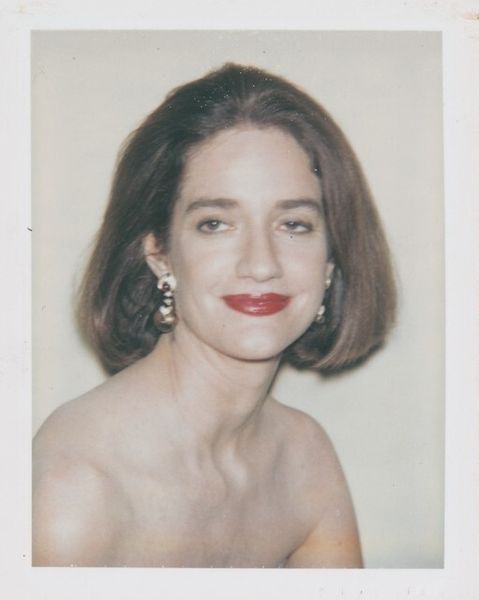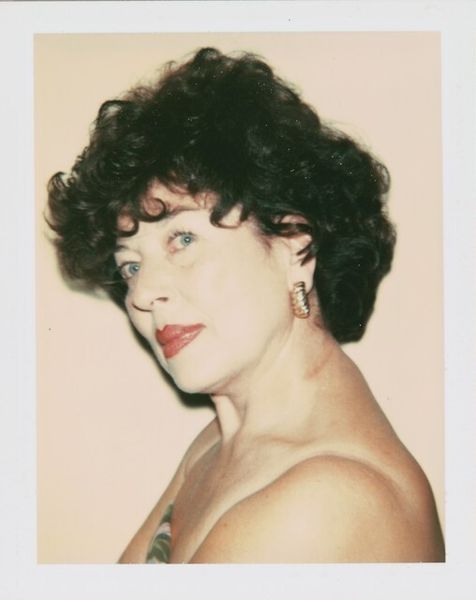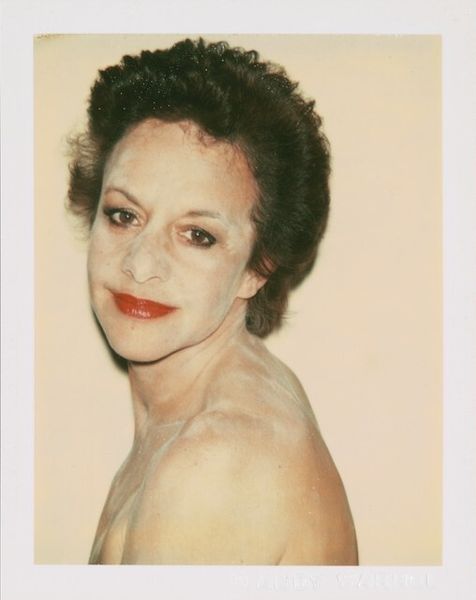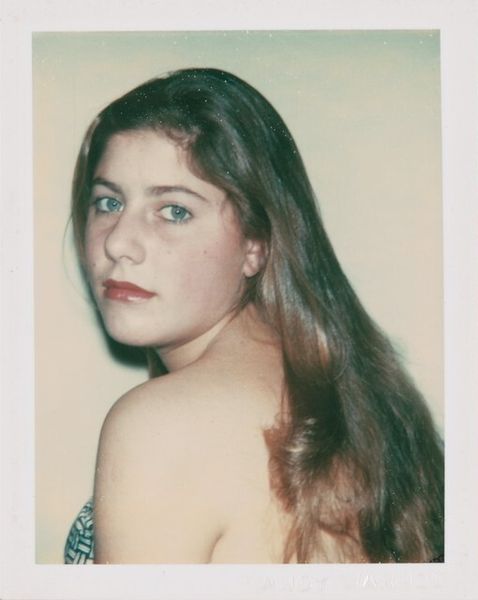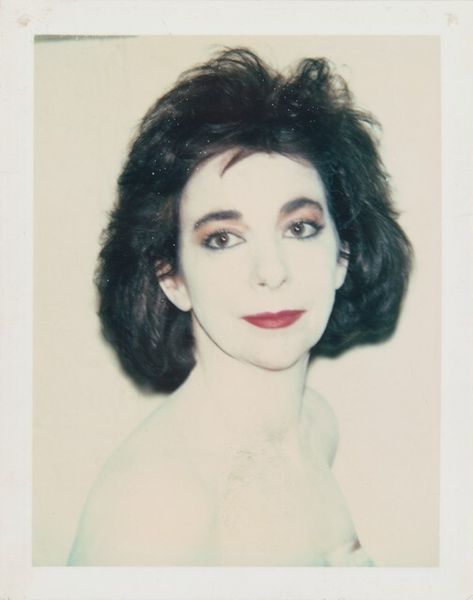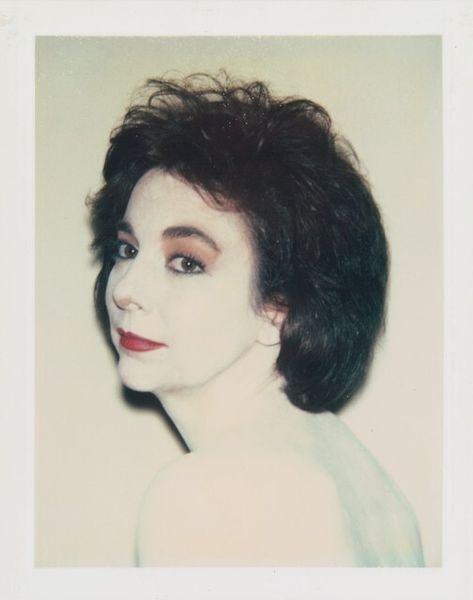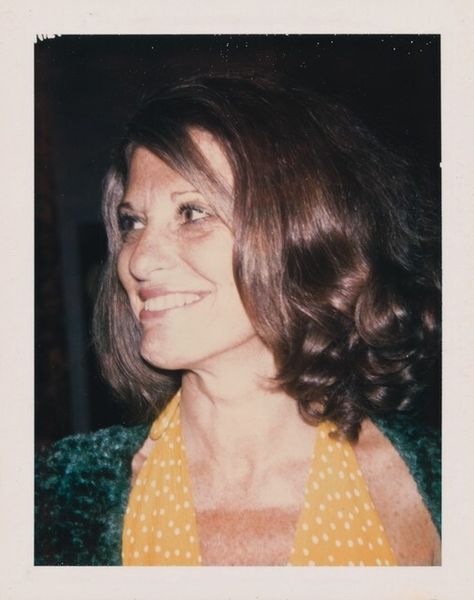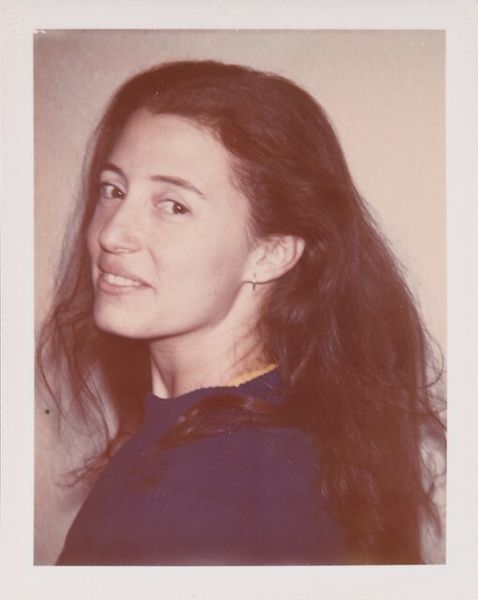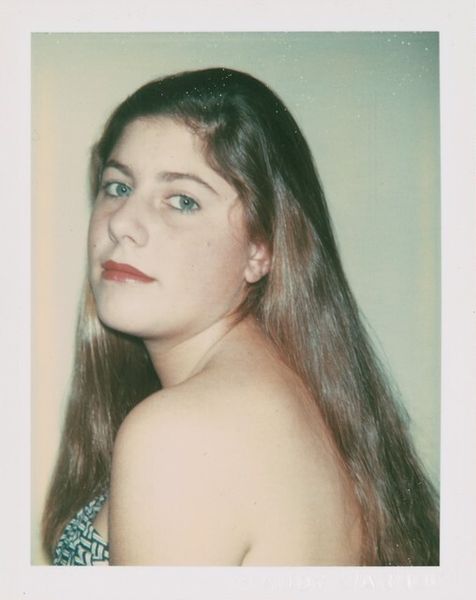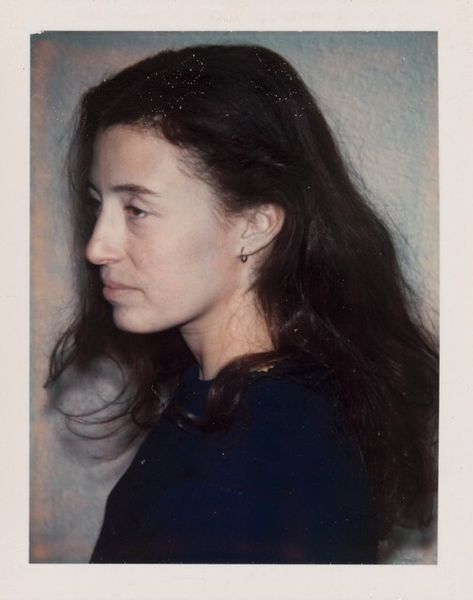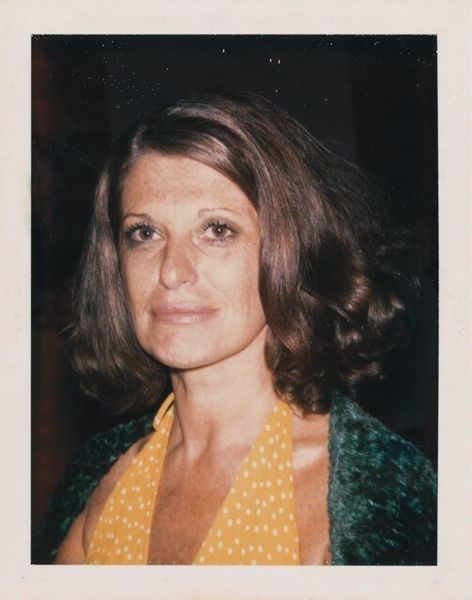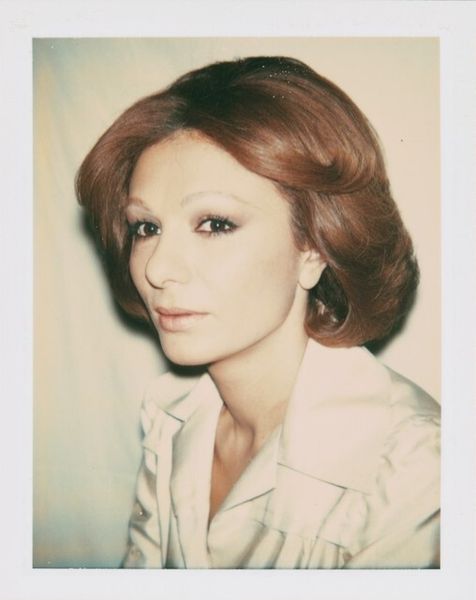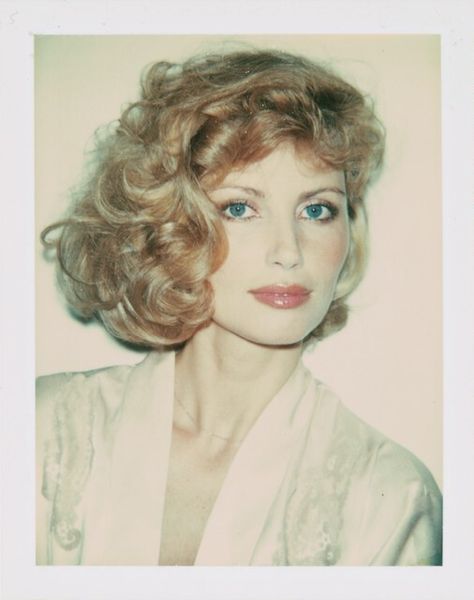
Dimensions: image: 9.5 × 7.3 cm (3 3/4 × 2 7/8 in.) sheet: 10.8 × 8.6 cm (4 1/4 × 3 3/8 in.)
Copyright: National Gallery of Art: CC0 1.0
Editor: So here we have Andy Warhol's "Mrs. O'Connor Inglehart," created in 1983. It's striking because it's a photograph, but it has this distinct Warholian feel, almost like a silk screen. What do you see in this piece? Curator: I see a clear examination of the relationship between photography and mass production. Consider the process. Warhol's Polaroids were never just simple snapshots; they were a means to an end. He used them as source material for his silkscreen paintings. It blurs the lines between unique art object and reproducible commodity. Editor: So, the photograph isn’t the final product but a stage in its making? Curator: Exactly. Look closely at the surface. This photograph isn't valued just for its subject, but for how it serves as a tool. The subject, Mrs. Inglehart, becomes part of Warhol’s production line, a cog in the creation of his Pop image. Think about the labor involved - both Warhol's and Mrs. Inglehart's in presenting herself. Editor: I never thought of her posing as labor before. Curator: What does that make you consider regarding labor? Does this shift our thinking on art consumption? Editor: I see how the process reveals so much about Warhol’s, and our, obsession with celebrity and production. The image is valuable as material for making a future commodity, blurring portraiture and product. Curator: Right. It moves our reading away from "likeness" and focuses instead on what it says about commodification. It shows the artistic method more clearly than if it were a silkscreen painting alone.
Comments
No comments
Be the first to comment and join the conversation on the ultimate creative platform.
